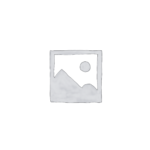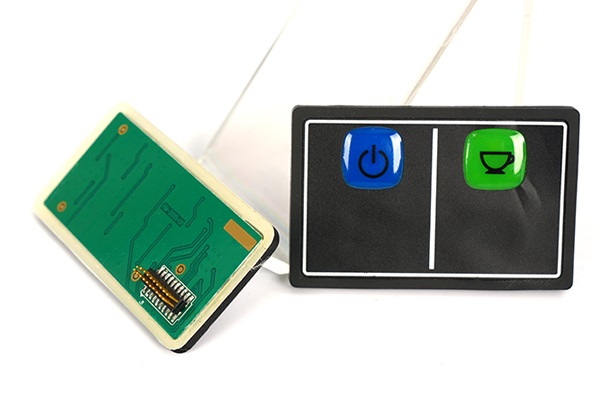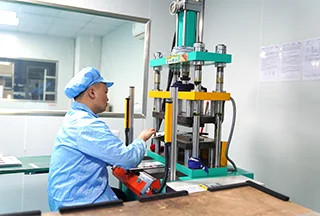
What is PCB membrane switch?
What is PCB membrane switch?
Membrane switch is a thin PET sheet with contacts, often be used as a switch in PCB, FPC and other circuit boards, and plays an important role in the touch switch between the user and the control device. The contact on the film key is located on the conductive part of the PCB board (mostly located above the gold finger on the circuit board), when the key is pressed by external force, the center point of the contact is concave and contacts the circuit on the PCB, thus forming a loop, the current passes through, and the whole product can work normally.
Membrane switch is usually composed by “buttons + PET film”, so the click feeling, characteristics and tactile feeling depend on the design of the membrane switch. In considerate to the reliability of switch contact separation and rebound, the thickness of the PET film is generally selected at 0.125-0.2mm. If it is too thin and weak, and the contact separation is not sensitive. Too thick slow response to increase the operation force.
What are PCB circuit board Membrane Switches?
PCB always refers to FR4 PCB. FR-4, is a widely acceptable international grade destination for fiberglass reinforced epoxy laminated that are flame retardant (self-extinguishing). After add copper layer on one or each side FR4, it become to Copper Clad Laminate (CCL), and this is the non-conductive core material for normal printed circuit board (PCB). Printed circuit board using FR4 as core material will be named as “FR4 PCB”.
The PCB membrane switch utilizes a PCB as the main structure and support substrate, with the membrane switch on the front of the PCB, and some other components on the backside of the PCB.


Membrane switch is a thin PET sheet with contacts, often be used as a switch in PCB, FPC and other circuit boards, and plays an important role in the touch switch between the user and the control device. The contact on the film key is located on the conductive part of the PCB board (mostly ...

A membrane switch gives a visually pleasing human-machine interface that is easy to use, low profile, and electronically stable. They are well known to stand up to harsh conditions. Flex circuitry is resilient and can be used in many different environments. Once you know what the end use will be for the flex circuit, the ...

Top Membrane Switches for Home Electronics Projects in 2025
You can elevate your home electronic membrane switch project in 2025 with standout models such as the 4×4 Matrix 12 Keys Keypad from SOUSHINE, the rgb-enabled strip switches from Molex, and custom graphic switches by Panasonic. These switches offer slim profiles and reliable performance, making them easy to integrate into your DIY setup. You gain ...

Top tips for fixing PS4 controller conductive film keypads
Are you frustrated because your PS4 controller buttons have stopped working? You are not alone. Many gamers experience issues with the conductive film keypad for ps4. Button failures often happen because of dirt, debris, or rough handling. Take a look at the most common causes: Cause Description Dirt and debris Accumulation in button crevices can ...

Top Membrane Switch Companies Leading the Industry in 2025
You see a dynamic market shaping the future of membrane switch technology. Leading companies like Molex, SOUSHINE, YU AN Electronics, TE Connectivity, Honeywell, Omron, Mitsubishi Electric, Panasonic, Industrial Print Technologies, SCHURTER, XYMOX, Douglas Corp, Dyna-Graphics, ELO Touchscreens, UTC, LUNFENG Technology, and Fujikura drive growth with innovation and global reach. Choosing the right membrane switch company ...
Contact us online